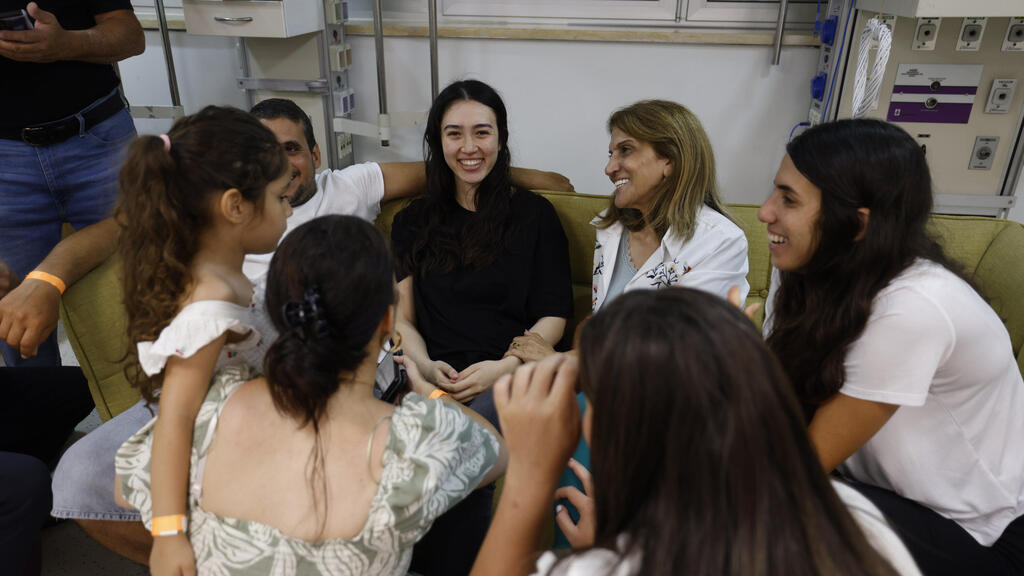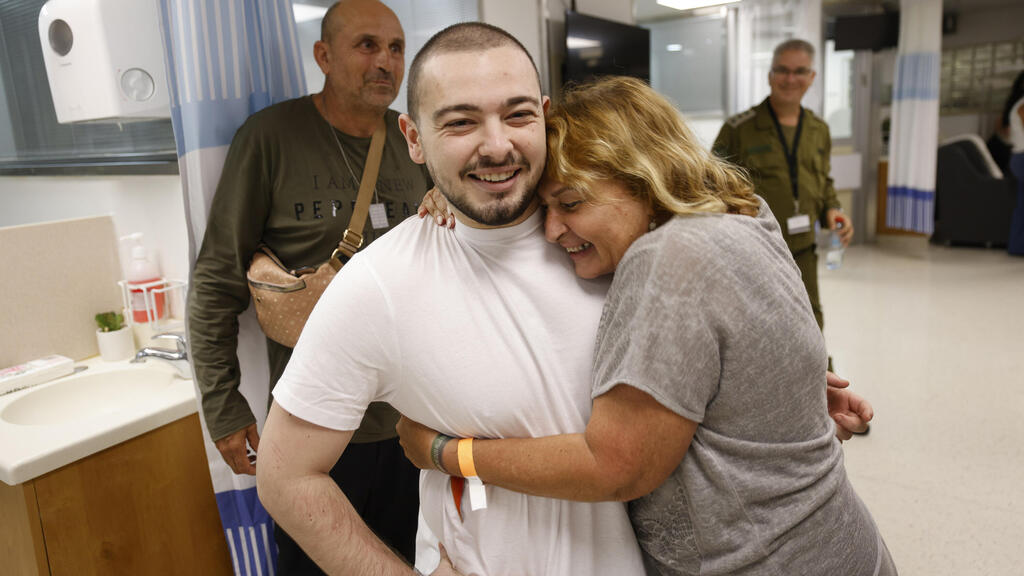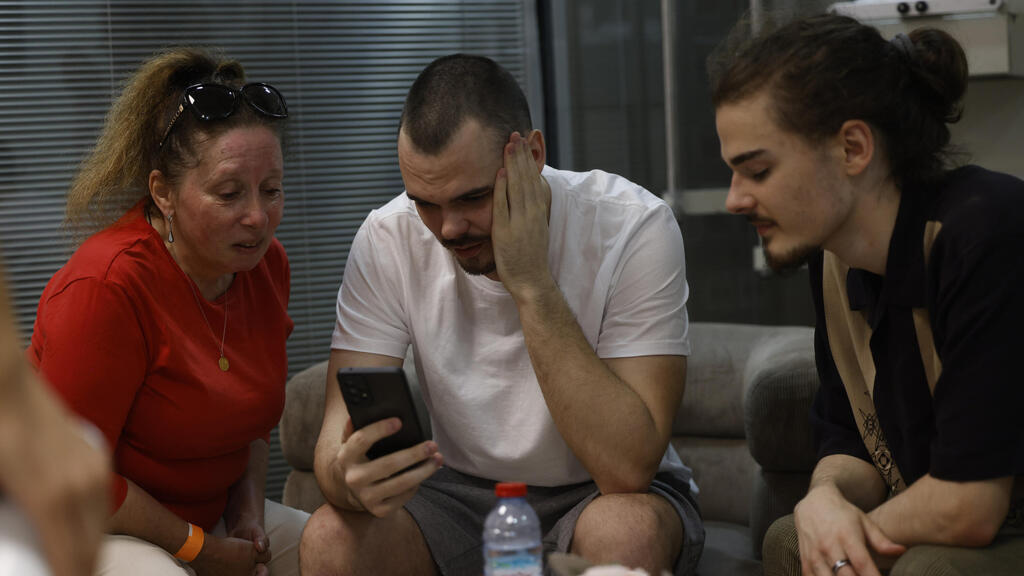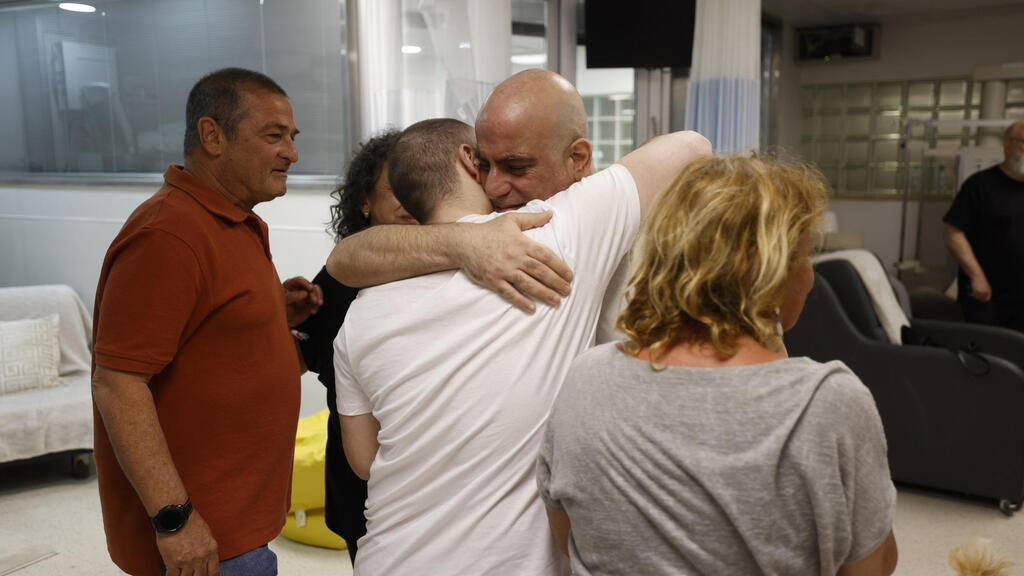Getting your Trinity Audio player ready...
When you think of a starving prisoner, you might picture the Holocaust—gaunt faces, hollow eyes, and ribs jutting through skin. This month, when four Israeli hostages were rescued and returned home, the world was pleasantly surprised to see that they appeared fine to the naked eye.
However, medical professionals who examined —Noa Argamani, Almog Meir Jan, Andrey Kozlov, and Shlomi Ziv— who were held hostage in Gaza for eight months and rescued earlier in June in a military special ops extractions, warned that appearances could be deceiving.
“They are not OK,” said Dana Weiner, head of the Nutrition Department at Sheba Medical Center, said. She was referring not only to these most recent rescued hostages, but also those who were released in November. “They are extremely ill, suffering from severe malnutrition and a critical deficiency of vitamins and minerals. It will take them a significant amount of time to physically recover to where they were before October 7.”
The World Health Organization (WHO) defines malnutrition as “deficiencies or excesses in nutrient intake, imbalance of essential nutrients, or impaired nutrient utilization.” Dana Weiner explained that WHO sets a minimum standard for “nutritional security”—the essential intake needed for survival—and has clear guidelines for identifying hunger, particularly in disaster and war zones. According to Weiner, these guidelines recommend a food supply of at least 2,100 calories per person daily to ensure nutritional security and prevent disease and death. She noted that the returned hostages received far less than this accepted standard, usually between 500 and 800 calories daily.
She said that in the first months, the hostages received only about a tenth of the required calories and no protein at all. Although their diets improved slightly over time, they only received between zero and 10 grams of protein daily—far below the roughly 100 grams needed.
The result is something referred to by medical professionals as sarcopenia, when muscle mass, strength, and performance are significantly compromised.
“In such a state, the body breaks down available reserves—mainly muscles,” Weiner explained. “We usually think of muscles as being in the arms and legs, but they also include internal organs like the heart, stomach, and diaphragm.” She said that in extreme conditions, the body focuses on operating the heart, brain, and respiratory system, shutting down other functions. This can lead to damage to internal organs.
“We conducted muscle strength tests,” Weiner added, “and their results were below the minimum possible on our chart.”
The team, which was led by dietician Meital Binyamin, also had to give the rescued hostages vitamin supplements. They needed vitamin D due to lack of sun exposure and vitamin B, which is crucial for brain function.
She explained that the hostages didn’t appear particularly thin because, under extreme starvation, the body stores any extra calories as fat. Moreover, unlike during the Holocaust, these victims were not forced to work; instead, they were sedentary.
“We know from Holocaust research, which is somewhat the same because they were also starved, the reason they lost weight is that they were starving but also worked, so they lost a lot of energy,” Weiner said. “These hostages were kept in a room. They did not move, and if they tried to exercise, they did not have protein to build their body.”
She noted that many of the 105 hostages released in November had lost up to 15 kilos during captivity, which is more than 10% of their usual body weight and sometimes as much as 15%. This significant weight loss puts them at high risk for malnutrition and other diseases. Weiner added that their condition was generally less severe because they were held for around 50 days compared to 250 days, like Argamani, Jan, Kozlov, and Ziv.
However, she noted that according to medical research, malnourished people tend to have more complications and a higher risk of mortality once they are hospitalized.
Weiner emphasized that the hostages were starved even when there was no shortage of food in Gaza. She explained that an analysis showed more than 3,000 calories per person were entering Gaza—more than enough to feed the hostages. If the people and the hostages didn’t receive food, it was because Hamas controlled the distribution and restricted access, according to Weiner.
“There is no hunger in the Western world,” Weiner added. “We don’t really see this kind of malnutrition.”
Currently, most released or rescued hostages have arrived in a condition where recovery is still feasible. However, older individuals from the initial release, who already had underlying health issues, are facing more significant challenges in physical rehabilitation. Weiner noted that their prospects for a complete recovery are significantly reduced.
One hostage experienced severe challenges with her lungs and heart. Another had problems swallowing and could not eat. Others are having trouble with their teeth.
“It depends on a lot of factors: Age, where they were—tunnel or house—how much food there was to spread around, the baseline of their physical status when they were kidnapped,” Weiner said. “Each person is different.”
Today, there are still 120 hostages captured on October 7 in Gaza, although Israel says it knows of at least 41 who are dead. Weiner said she did not want to cause grief to the families of hostages still in captivity but warned that for less healthy people still in Gaza, there may already be lasting effects.
“There is a point of no return,” Weiner warned.
‘People’s resilience is outstanding’
Professor Hagai Levine, who heads the health team for the Hostages and Missing Families Forum, said it was important to include hostage families in the rehabilitation process. He noted that many families have spent nearly nine months fighting to bring their loved ones back and are now focused on their rehabilitation, often neglecting their health. Levine added that many family members are experiencing increased addictions, such as smoking, improper eating habits, and heightened stress and mental health issues. “The families also need to be considered,” Levine said.
Levine is advocating for the establishment of a national rehabilitation program for the hostages and their families. This program would include a dedicated center offering essential services and a platform for doctors to conduct research. He said such research could contribute to developing international protocols and best practices for managing the health of hostages.
He suggested implementing periodic questionnaires and medical examinations for hostages and their families. This approach, he said, would allow professionals to gather insights on what interventions are most beneficial and which ones are less effective, helping the country refine its rehabilitation strategies.
“On the one hand, rehabilitation is individual,” Levine told The Media Line. “On the other hand, we can learn some lessons from what we see about what we need to understand about rehabilitation.”
He said rehabilitation needs to be holistic, encompassing “the entire human life.” This could include returning to work, achieving independence, socializing, forming relationships, starting a family, and resuming roles as parents or children. Rehabilitation should also address sleep and eating disorders, mental health issues like anxiety and depression, and physical impacts on the respiratory, cardiovascular, bone, and metabolic systems.
“On the positive side, people’s resilience is outstanding, and despite the very challenging conditions, there is hope for them to find meaning and recover,” Levine added. “However, it will be a very long and difficult struggle.”





